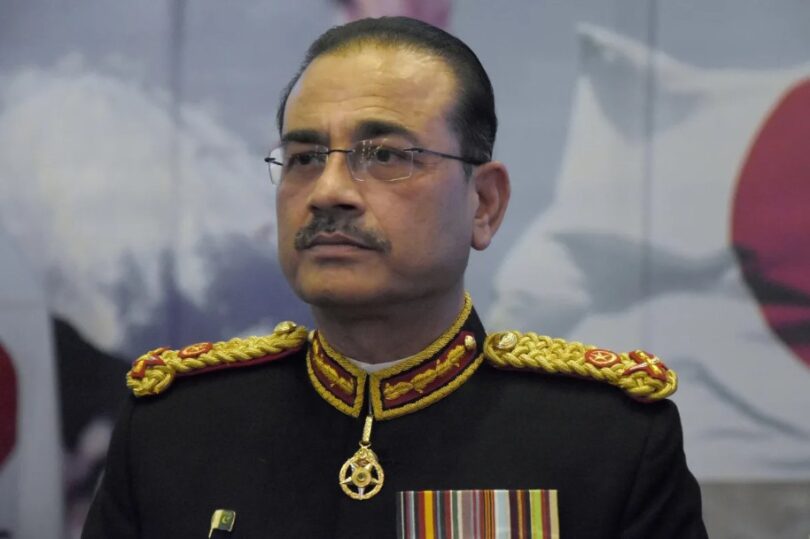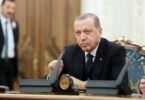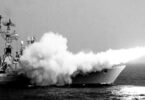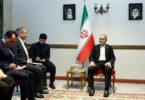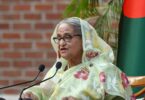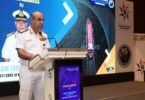Whatever happened in India and Pakistan since an atrocious attack with religious overtones on 26 male tourists in Pahalgam, Jammu & Kashmir (J&K), India, on 22 April 2025 by Pakistani terrorists, threw open the lid on how Pakistan’s power-drunk leaders have been misgoverning their country since its painful birth, constantly on lies, denials, delusions, deceit etc.
One of the rather cruel aspects of this attack were that many of the males shot cold-bloodedly at point blank range, were with their wives - some on their honeymoon - or with their family members and they were made to unzip their trousers to prove that they were non-Muslim and then killed.
The reaction all over India went from shock to overwhelming anger. Prime Minister Narendra Modi conferred with Home, External Affairs and Defence Ministers, the National Security Advisor, the Chiefs of Defence Staff, Army, Navy and Air Force for fourteen days to meticulously plan and decide upon courses of action and an operation codenamed ‘Sindoor’. Sindoor is vermillion powder, a pinch of which is applied on the forehead and parting of the hair by married Hindu women. If their husbands die before them, this Sindoor is removed never to be worn again. The significance of naming the military operation Sindoor became more obvious over the few weeks after it was launched.
Thirteen days after Op Sindoor was launched, on 20 May 2025, and for the second time in 78 years of Pakistan’s history, General Asim Munir, its army chief, was made a field marshal. The first field marshal was Ayub Khan, who not only promoted himself to that rank in 1959 but also appointed himself as Pakistan’s chief martial law administrator/dictator president, the first of four so far. While in Munir’s case the Pakistani government promoted him, but then, who runs that government? Since 1959 till date, it is Pakistan’s army which officially (through a tin-pot/army president or unofficially (even with an ‘elected’ government in place) has been running the country.
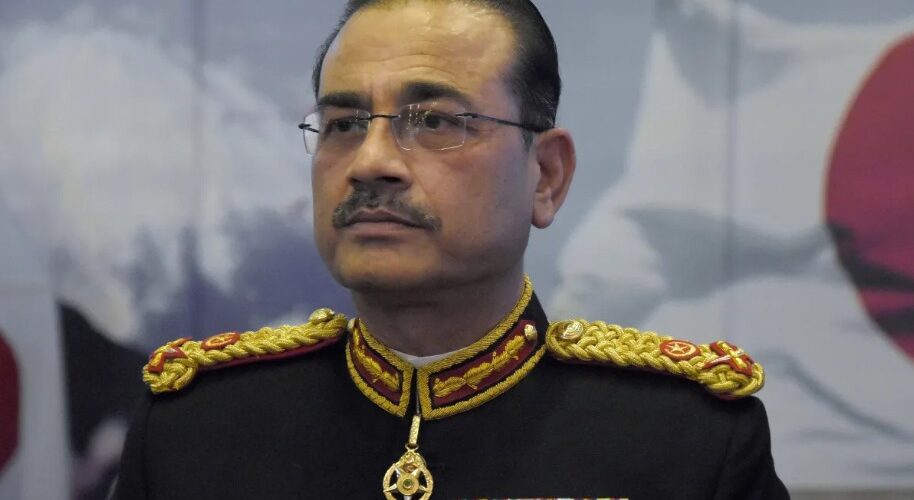
The qualification for being promoted to the rank of field marshal in many countries historically is that the general should have an extraordinary military achievement of at least a wartime victory. It should be clearly known that neither Ayub nor Munir fall into that category. While Ayub Khan promoted himself not after any military victory but on vanity driven by power, Munir’s promotion to field marshal followed almost immediately after Pakistan’s debilitating military defeat combined with failure of his army to hit back at the enemy, India, which blasted nine of Pakistan’s army supported terrorists’ camps and destroyed or disabled eighteen vital military air bases in May 2025. So, the Pakistani public is not wrong in referring to Munir as a “failed” marshal.
It is relevant to take a long look at 78 years of Pakistan.
Undivided India’s army under British rule, having fought two world wars (WW I, 1914-1918 and WW II, 1939-1945) valiantly, proved to be the war -winning factor for the Allies in both and got acknowledged as the about the best army in the world by both the Allies and the Axis nations.
One of the great costs of India’s freedom was its breakup diligently planned and worked at by the British, resulting in dividing it in three parts, the smaller two of which were created as West and East Pakistan. The undivided British Indian Army, Navy and Air Force were also divided so that Pakistan received approximately 30% of the Army, 40% of the Navy, and 20% of the Air Force.
Thereafter, the Indian Army not only remained the best, but most importantly, became an army of a democratic country following the orders of an elected government and even more important, an army which vowed to be apolitical and has remained so till date. In fact, not only did India’s Armed Forces remain apolitical, but they have also contributed majorly to nation-building.
The first change that occurred after the partition was that while the Indian Armed Forces maintained the custom of all religions being treated equally and each religious festival celebrated jointly by all ranks, Pakistan’s armed forces became Islamic. The first very significant and negative effect this had in battle became obvious in the 1965 India-Pakistan war, particularly in tank warfare. When a tank gets hit, the crew do not bail out till it has not begun burning but stay in it and use all its weapons, the main gun and two machine-guns, or if the main gun is damaged, keep using the machine-guns. The crew should bail out of the tank only when they are endangered by flames. Pakistani tank crews abandoned their tanks as soon as taking one hit, even if it were only to its lower parts and its weapons were still functional. The reason for this is that their life must not end by burning. If it does, they will go to ‘jahannoom’ (hell). The result was that many more of their tanks were lost in both the 1965 and 1971 wars.
Another aspect of total lack of professionalism in Pak army was brutality against the enemy. Indian military personnel who got surrounded/captured by Pakistani troops in 1965, 1971 and even thereafter, were tortured with utter brutality involving beheading, dismembering of their bodies before killing them.
In the 1950s, Pakistan had received a generous dole of M-48 ‘Patton’ tanks from the US, which Pak army used in the 1965 war. Large numbers of these quite new and superior tanks being destroyed by Indian Army’s Second World War vintage tanks, became a great embarrassment for the Americans. Not only that; Pakistani tank crews’ training on the Patton tanks had been most insufficient. This came to be known after over 300 Pakistani tanks - mostly Pattons - got destroyed or captured by Indian Army, because many of their distance gauges showed that they had not even been driven more than 50 odd kilometres.
Both these drawbacks of fear of flames and lack of training reflect lack of leadership and morale-building quality. Lack of training is also a result of lack of leadership. All these are attributes are very much connected to being intoxicated with power, constantly dealing with lies, means believing in those lies and therefore being delusional.
The aim of the British to create Pakistan was based on their principle of divide and rule and was achieved by them by craftily propagating repetitively a great lie that Muslims of India will never get their due under a government ruled by Hindus. This was the big lie persistently spread to plant doubts in the minds of India’s Muslims that they would need a separate nation. The fact that Jinnah joined the Muslim League in as early as 1913 after studying and practicing law in England, was certainly not without the British very subtly steering him in a way that suited them in pursuit of their plans to partition India.
Within a year of Pakistan’s birth, the already ailing Muhammad Ali Jinnah died. Then some more prominent leaders died or were assassinated including Liaquat Ali Khan, Pakistan’s first Prime Minister, marking a period of instability in this newly formed country’s early years. That is when Pakistan’s army pounced to fill a large political vacuum formed by the loss of these leaders and there it stayed growing well away from being a professional army.
Professionalism in the newly formed Pakistani army took the first hit in the first war it waged against India-1947-48- when it outsourced the fighting to over 25,000 Pashtun tribals. This outsourcing was also the first terrorist attack on Jammu and Kashmir, because these tribals led by Pak army officers committed murder, rape and robbery. Outsourcing eventually became a standard procedure because it suited the professionally handicapped Pak army very well, as proved in more wars that it waged against India.
Having been born based on lies, Pakistan grew with more lies getting added from time to time. The lies that came with Pakistan’s painful birth were that Kashmir must be grabbed, India must always be fought against/defeated and Hindus are not to be trusted. Forgotten were the good times that both Hindus and Muslims communities had had in the past. Instead of necessary administration, building schools, hospitals, industry etc., much money was spent on waging war against India.
Over a period, a combined effect of these lies with power was that its leaders tended to become quite delusional, which not only adversely affected many of the politico - diplomatic and strategic military perceptions but also made their own public quite detached from reality.
Since 1947, Pak army officers had been feeding their troops the myth that one Muslim soldier was the equivalent of ten Hindu soldiers. Further, Pakistani leaders believed that after the Sino-Indian war of 1962, India as a ‘weak nation’ and Ayub Khan did not think very highly of Prime Minister Lal Bahadur Shastri. As it turned out, Mr. Shastri surprised not only Pakistan Army but the entire Indian nation too. And for Ayub one of the great blows about Indian Army’s offensive was that the tank regiment in which his father, Risaldar Major Mir Daad Khan served, 4 Horse, also known as Hodson’s Horse, destroyed 87 Pakistani tanks and 17 recoilless guns, considered a very high score for an armoured regiment.
In 1965, Zulfikar Ali Bhutto, then a member of the Ayub Khan regime, initially believed that India would not launch a full-scale attack in response to Pakistan's Operation Gibraltar. However, India did exactly that-launch a full-scale military response, leading to the 1965 India-Pakistani War.
In December 1971, Pak army in erstwhile East Pakistan was stooped in rape, loot, pillage and massacres of the East Pakistani Bengali population. This was again a period when almost 1,00,000 personnel of Pak army, navy, air force and police functioned as terrorists and that too against their own people. Once war was declared by India on 03 December 1971, within 13 days, Indian Army had surrounded East Pakistan and forced Lt Gen A.A.K. Niazi, the Pakistani army commander pleading for a ceasefire, to surrender, which he had to. Over 93,000 Pak army and other personnel laid down their arms at the Ramna Race Course in Dhaka on 16 December 1971 and were taken as prisoners of war by India, as promised by the Indian Army Chief General S.H.F.J. Manekshaw. Niazi, who on the previous evening, i.e. on 15 December, was desperately trying to ring the Pak army chief, Gen Yahya Khan could not connect with him because Yahya was celebrating a party with his current woman friend in the altogether-yes, a nude party-also mentioned in Hassan Abbas’s book, Pakistan’s drift into extremism, Pentagon Press, India. All Niazi could do was abuse Yahya and co. in Islamabad.
Manekshaw was honoured with the rank of Field Marshal 01 January 1973. He was one of the two India’s Generals to be honoured with this rank, the other one being General K.M. Cariappa, on 28 April 1986.
So far in Pakistan’s history, it has been directly/openly ruled by four military dictators: Ayub Khan (1958-1969), Yahya Khan (1969-1971), Zia-ul-Haq (1977-1988), and Pervez Musharraf (1999-2008). While they all seized power through coups and suspended democratic institutions, leading to periods of military rule mentioned, in other periods till date, Pak army wields full power.
It was Zia-ul-Haq who realised that Pakistan cannot defeat India in conventional wars. He began the process of Islamisation of Pak armed forces. Pakistan was already an Islamic state, but in Islamisation, Zia aimed for much more. He implemented Zulfikar Ali Bhutto's "thousand years war" with 'Bleed India Through A Thousand Cuts' doctrine launching covert and low intensity warfare by infiltrating poor Pakistani youth indoctrinated in madrassas and trained by Pak army into J&K and other parts of India for terrorist attacks. This is a very cheap option of force multiplication and asymmetric warfare without committing own troops against the enemy. These are not “non state actors” as projected, but full-fledged, organised instruments of state/essential part of state policy. One of the types of evidence are photographs of last rites of Pakistani terrorist leaders in which a number of serving Pakistani generals are seen attending and the coffins of the dead terrorist commanders are draped in the Pakistani national flag.
The dastardly 22 May ’25 Pahalgam attack by Pakistani terrorists was launched a few days after Asim Munir’s ranting the “two-nation theory” and specifically stating that Muslims cannot live with Hindus/ they are very different communities etc., while addressing an Overseas Pakistani Convention in Islamabad. Op Sindoor turned out to be an extended and long overdue response against Pakistan for almost three decades of terrorism that it had exported to India and the massacre of hundreds of thousand Kashmiri Hindus. Nine terror camps were reported destroyed and a total of eleven initially plus seven reported later, i.e. eighteen airfields in Pakistan have been rendered unserviceable.
Reporting on the effect of Operation Sindoor has been marked by much disinformation/misinformation, fake news, propaganda from Pakistan, whereas dissemination of information about the operations done by India was in an organised manner by India’s Foreign Secretary and Armed Forces officers from time to time. While there was a concerted effort to paint a picture of India losing many fighter jets and also of poor information management, over a couple of weeks it became very clear how wide and destructive India’s attack on Pakistan was.
As to what Pakistan is expected to do in view of the many steps India has taken including holding in abeyance the water treaty, it remains to be seen. As a signal has reportedly been sent by China that “do not do to others what you do not want done to you”. On export of terror, it is most unlikely that Pakistan is going to stop such an elaborate jihadi network, which is part of its establishment. If officer cadets in Pakistan Military Academy still pledge revenge against loss of East Pakistan, then the Pakistan military top brass’s delusional mindset may make that pledge more elaborate.
Meanwhile, as India has stated, Op Sindoor is not yet over and there are still a few thousand Pakistani terrorists still up and about. Whether India will continue the operation of eliminating more terrorists, or their commanders or their hideouts, or not, or how it proceeds, only time will tell.
The author a strategic affairs analyst and former spokesperson, Defence Ministry and Indian Army, can be contacted at wordsword02@gmail.com, https://www.linkedin.com/in/anil-bhat-70b94766/ and @ColAnilBhat8252


